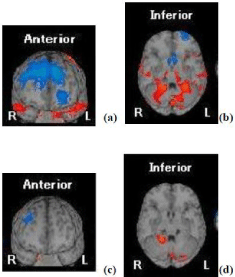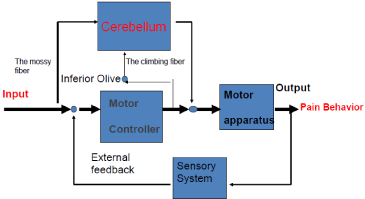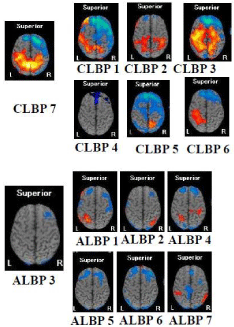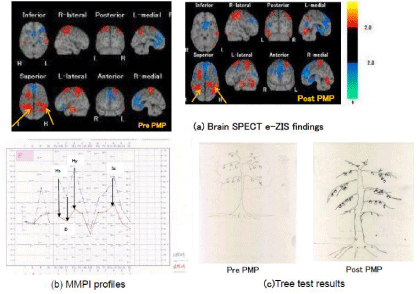
Special Article – Disability and Rehabilitation
Phys Med Rehabil Int. 2016; 3(4): 1091.
Current Chronic Pain Management Programs in Japan
Honda T¹*, Chikai M², Ohnishi T³, Honda K4, Ino
S², Takahashi H
¹Department of Rehabilitation Medicine, Hanno Seiwa Hospital, Japan
²Human Informatics Research Institute, National Institute of Advanced Industrial Science and Technology (AIST), Japan
³Department of Rehabilitation Medicine, Showa Inan General Hospital, Japan
4The Elders Cooperative Society Yasuoka, Japan
5Department of Rehabilitation Medicine, Saitama International Medical Center, Saitama Medical University, Japan
*Corresponding author: Tetsumi Honda, Department of Rehabilitation Medicine, Hanno Seiwa Hospital, 137-2 Shimokaji Hanno City, Saitama Pref. 357-0016, Japan
Received: June 22, 2016; Accepted: July 07, 2016; Published: July 11, 2016
Abstract
Since the 1960s, a multidisciplinary-team approach based on cognitive behavioral therapy has been implemented worldwide in chronic pain rehabilitation. The chronic pain model was a multifaceted model at first, but later an altered nervous-system processing model was proposed, encompassing the idea of nervous system dysfunction. In recent years, the supersystem dysregulation model has been proposed from the standpoint of systems biology, in which chronic pain is understood in terms of chronic dysregulation of the body’s entire nervous, endocrine, and immune systems in response to excessive stress from the environment. In Japan, the multidisciplinary-team approach based on a multifaceted model started being applied in 1986. The use of brain single-photon emission computed tomography was introduced in this approach in 2003, and it led to a transformation of the approach into a cognitive brain-body-environment adjustment program based on the supersystem dysregulation model. The program involves correcting cognitive bias, tuning brain function abnormality, reconditioning physical disuse, and modifying environmental stress.
Keywords: Chronic pain; Rehabilitation; Multidisciplinary approach; Brain imaging; Cognitive behavioral therapy; Systems biology
Abbreviations
CPP: Chronic Pain Patient; ALBP: Acute Low Back Pain; CLBP: Chronic Low Back Pain; VAS: Visual Analog Scale; MMPI: Minnesota Multiphasic Personality Inventory; SPECT: Single-photon Emission Computed Tomography: e-ZIS: easy Z-score Imaging System; PET: Positron Emission Tomography; MRI: Magnetic Resonance Imaging; MSW: Medical Social Worker; PT: Physical Therapy; OT: Occupational Therapy; CP: Clinical Psychology; ADL: Activities of Daily Living.
Introduction
In Japan, the multidisciplinary-team approach for the management chronic pain was implemented for the first time in 1986 [1]. In this paper, we provide an overview of the evolution of the chronic pain model, and introduce our chronic pain management program.
Changes in the Chronic Pain Model that Formed the Basis of Chronic Pain Rehabilitation Programs.
From a multifaceted model to an altered nervous system processing model [2].
Loeser and Eagan [3] proposed “the multifaceted model of pain”, which involves 4 domains of pain phenomena, namely nociception, pain sensation, suffering, and pain behavior. This model served as the theoretical basis for cognitive behavioral therapy programs (pain management program with a multidisciplinary approach) implemented worldwide since the 1960s.
Furthermore, recent developments in brain function imaging techniques such as single-photon emission computed tomography (SPECT), positron emission tomography (PET), and magnetic resonance imaging (MRI) have brought about changes in the understanding of chronic pain. Using magnetic resonance imaging brain scan data Apkarian et al. [4] observed atrophy in the cortex of the frontal lobe in patients with chronic low back pain.
We introduced brain SPECT with technetium-99m ethyl cysteinate dimer in 2003, and performed a two-tailed view analysis by using the easy Z-score imaging system (e-ZIS, Fujifilm RI Pharma, Tokyo, Japan). A Z-score is a dimensionless quantity obtained by subtracting the population mean from an individual raw score and then dividing the difference by the standard deviation for that population. An e-ZIS two-tailed view analysis was used to assess the extent and degree of regional blood flow as a Z-score value, which was then presented as a graduation hue on the brain surface generated by the Talairach Daemon using vBSEE software (Fujifilm RI Phrma, Tokyo, Japan). Using such a representation, it was possible to observe a trend toward decreased blood flow to the prefrontal area and increased blood flow to the cerebellum and parietal lobe of patients with chronic pain (Figure 1) [5].

Figure 1: Brain SPECT e-ZIS findings from 15 consecutive patients with
chronic pain (surface view).
Furthermore, in a comparison between patients with acute and those with chronic low back pain in terms of brain SPECT results, the latter group exhibited a significantly lower blood flow to the prefrontal lobe and a significantly higher blood flow to the cerebellum (Figure 2) [6]. Levin [7] speculated that the cerebellum contributes to the unconscious and automatic human behavior. Kawato and Wolpert [8] proposed the internal model of the cerebellum, suggesting that this organ mimics the voluntary sensorimotor system and takes the role of the frontal cortex in determining the motor commands required to perform specific tasks. These results imply that, in patients with chronic low back pain (CLBP), dysfunction of the prefrontal cortex may lead to the appearance of unconscious pain behavior controlled by the cerebellum (Figure 3).

Figure 2: Brain SPECT e-ZIS findings from 7 consecutive CLBP patients
(a,b) and 7 ALBP patients (c,d) (surface view).

Figure 3: Internal model of the cerebellum and pain behavior.
Though not statically significant, the blood perfusion in the somatosensory cortex of the parietal lobe also increased in 4 of 7 CLBP patients [6] (Figure 4). Chronic stress has been reported to induce central sensitization [9], and further studies are needed to clarify the relation between pathological central hyper sensitization states such as fibromyalgia and CLBP.

Figure 4: Each Brain SPECT e-ZIS findings in the CLBP group and the ALBP
group (superior view).
From the altered nervous system processing model to the supersystem dysregulation model [10].
Stress is caused by a wide range of strong external stimuli, both physiological and psychological, which can induce a physiological response called the general adaptation syndrome [11,12].
From the standpoint of systems biology, Chapmanet al. [10] have proposed that the nervous, endocrine, and immune systems are closely interlinked and function as a supersystem to defend the body, and that the essence of chronic pain is the sustained dysregulation of this supersystem in response to unusual levels of stress.
Recently, all forms of chronic pain, from fibromyalgia, to chronic low back pain, to irritable colon syndrome, have come to be referred to as a nervous system dysfunction, as understood in the context of the altered nervous system processing model, with chronic pain also referred to as functional pain syndrome [12].
Fall prevention is one of the main themes in rehabilitation medicine. In elderly individuals, reduced plantar cutaneous sensation is a major risk factor for falling [13]. Ino et al. [14] produced a quantitative plantar sensory testing system (Figure 5), which we introduced in our rehabilitation practice.

Figure 5: A quantitative plantar sensory testing system.
In a preliminary test for a patient with chronic lower back pain, the plantar sensation was not measured, although, upon physical examination, no peripheral or central nervous system dysfunction was found in this patient (Figure 6 and Table 1) [15]. The mechanism of changes in plantar sensation in patients with chronic pain is unclear, but we consider it a manifestation of an altered nervous system.

Figure 6: Demographic data of a CLBP case.

table 1: The test results of a CLBP patient.
Changes in Our Pain Management Program
Introduction of the multifaceted model
In 1986, we initiated a 3-week program that emulated the cognitive behavioral therapy program at the University of Washington Pain Management Center in the United States (Table 2) [1]. As a result, we observed significant improvements in the psychological testing results (Minnesota Multiphasic Personality Inventory, MMPI [16]; Figure 7) and degree of subjective pain, with a consistent, long-term trend of decreasing pain in our patients (Figure 8).

table 2: A 3-week multidisciplinary team approach program for CPPs.

Figure 7: MMPI profile pre and post PMP.

Figure 8: Chronological changes in VAS scores for pain after PMP (n = 22).
However, it is known that all patients with chronic pain incur severe stress in their social lives. We found that relationship problems and work-related problems, respectively, are a major source of stress for female and male patients with chronic pain. Thus, in 2004, we shifted to a 3-month outpatient program consisting of 2 or 3 sessions per week, with additional counseling provided by a medical social worker (MSW), as well as environmental adjustment. This continues to be the standard program we follow for management of chronic pain [17].
Transformation to the altered nervous system processing model
Owing to the introduction of brain SPECT (e-ZIS) in 2003, visualization of the dynamics of brain function in terms of blood flow became possible. As a result, the following changes have been made in our program [17]. First, by presenting the brain imaging findings to the patients, a therapeutic alliance became possible between the staff and the patients, with the common goal to make appropriate adjustments to the “altered brain.” Second, it became possible to perform individual “micro adjustments” of the program to target the specific site of brain function alteration. For example, the program now allows to prescribe medication for decreased function of the dorsolateral area of the prefrontal cortex (antidepressants), or to execute stronger behavioral therapeutic interventions for exacerbated “pain behavior” originating in the cerebellum.
Expansion to the super system dysregulation model
As our understanding of chronic pain evolved toward the concept of supersystem dysregulation in response to stress from the environment, our program further changed as follows. First, our staff understood the various mood-based symptoms such as fatigue, insomnia, and lack of appetite in patients with chronic pain. As a result, it was easier for the staff to provide a supportive response to the patients. Second, the concept of “relocation therapy” was introduced, since, from the standpoint of supersystem dysregulation, eliminating the stressor has the greatest effect on reducing chronic pain. In fact, we had a case of a remarkable improvement in pain due to temporary separation from the spouse as part of the 3-month program (Figure 9 and the Case Report below) [16].
Case Presentation
Subject: H.M., a 55-year-old woman
Diagnosis: Fibromyalgia
Medical history: The patient had chronic low back pain since she was in her 20s. Although the patient underwent surgery for lumbar spondylolisthesis at the age of 40 years, the symptoms did not improve, so she underwent another surgery at the age of 42 years. Thereafter, she experienced whole-body fatigue and pain. The patient had a menopausal disorder at the age of 47 years, and was diagnosed as having fibromyalgia at the age of 52 years, after having undergone examinations at clinics for internal medicine, gynecology, and psychosomatic medicine. At the age of 55 years, she was referred to our hospital (in the Nagano prefecture, where the previous workplace of the first author of this study was located) by an orthopedist in her residential area (Kanagawa prefecture). At the time of the referral, the patient performed little physical activity at home (she mostly had bed rest), and used a wheelchair when going out, suggesting a condition that required long-term care.
Summary of the intervention program: We mailed the information about the program to the patient in advance. Upon meeting her family (her husband and her daughter) during the first medical examination, we obtained confirmation of the participation and agreement of the patient to relocate to the Nagano prefecture, which was a requirement of the program. The patient relocated without her husband and spent 3monthsin a rental apartment while participating in the program.
Details of the program
The examination period (1 month) included the following investigations: examination of physical performance in activities of daily living and instrumental activities of daily living; psychological test; brain SPECT imaging; and recording life and family history.
The treatment agreement involved making the test results available to the patient and family. The patient agreed not to skip any sessions without previous consultation with the staff, and was informed regarding the fact that the staff members would adopt a neutral position against pain.
The intervention period (2 months) consisted of the following activities: education/medical examination by a physician, 30 minutes, once a week; counseling by an MSW, 40 minutes, once a week; rehabilitation training in physical therapy and occupational therapy, 40 minutes for each, twice a week; autogenic training and cognitive training by a clinical psychologist, 40 minutes for each, twice a week; and a team meeting with the entire team, once a week.
Progress
During the examination period, the patient had tenderness throughout the body, corresponding to a score of11/18 according to the criteria of the American Rheumatism Association, and a pain score of 3.3/10 on the visual analog scale (VAS). A brain SPECT e-ZIS analysis revealed an increase in blood flow in the bilateral temporo-occipital area and a decrease in blood flow in the prefrontal cortex (Figure 9a). In the psychological test, high MMPI scores were obtained, which reached the neurotic triad scales hypochondria, depression, and hysteria (Figure 9b). An interview regarding life history revealed that the patient had been raped by a man in her neighborhood when she was a child. The patient married at 19 years of age and managed the office work of the company ran by her husband. However, the company became bankrupt by the time the patient was in her 40s. Although at the time of the interview her husband had income from renting a building, he was a compulsive gambler, which caused the family income to be unstable. The patient lived in fear of debt collection.
During the intervention period, the physician conducted medical examinations, informed the patient of the fact that excess rest enhances pain, and instructed the patient to increase the amount of physical activity. The physical therapist instructed the patient how to perform movements that rarely cause low back pain (body mechanics), and prescribed a program for increasing physical strength (bicycle ergometer and table tennis). During occupational therapy, the patient practiced her hobbies (pastel drawing and handcrafts) that consisted of activities in a sitting position, as well as cooking. The clinical psychology sessions consisted of autogenic training that included mainly abdominal breathing, and cognitive training to improve focus. The MSW interviewed the patient to achieve a general understanding of the aspects related to her life history (emotional trauma due to the rape experience) and environmental stress (fear of debt collection and anger against her husband’s gambling addiction and the consumer financing company) that were associated with pain behavior. The possibility that pain behavior was a stress-coping strategy was also explored.
While relocated, the patient was able to perform all physical activities necessary to live by her. At the first medical examination, she reported being surprised that she had become able to walk for as long as 1 hour. Furthermore, the MSW noted that the patient’s symptoms remarkably improved once she spent some time away from her husband, as she began to understand the relationship between conflict with her husband and pain behavior. The patient came to consider separation from her husband and financial independence (by means of opening a folksy Japanese restaurant and making use of her good cooking skills) after completion of the program. Thereafter, the patient repeatedly complained of crying all day and not feeling confident that she could live separated from her husband. The staff members did not advise the patient in any particular direction, but they did share the results of all evaluations and wait for her decision. During the meeting with the physician 3 weeks before completion of the program, the patient expressed her desire to describe her feelings to her husband and explain the relationship between her feelings and the pain. The patient had resolved to continue living with her husband.
On the day of the last medical examination, the VAS score was 0.7/10, and the MMPI scores had decreased significantly, including those for the neurotic triad (Figure 9b). The results of the Baum test (tree test), which reflects the unconscious ego, suggested the recovery of ego function (Figure 9c). Brain SPECT imaging also revealed a slight improvement of the blood flow in the temporal lobe (Figure 9a). On the last day of the program, the patient prepared delicious food for the staff members, as a form of completion of the program.
Epilogue

Figure 9: The pre and post PMP test profiles of case H.M.
After the patient completed the program, we followed-up with the referring physician in the Kanagawa prefecture, who reported that, although the patient’s condition was stable immediately after she returned home, she had pain recurrence after a while. The patient seemed to be troubled by the debt of her husband again. However, 2 years later, we received the following letter from the patient:
“I am deeply sorry for my ingratitude for the last 2 years. What I experienced in Nagano helps me emotionally almost every day. I often wanted to go to Nagano by myself! After I returned home, I returned to reality. However, I have chosen to live with my family. Whenever I get in trouble, I try to remember what I learned in Nagano and make an effort to stay calm. To all of you who made me feel strong, I wish further success and health from the bottom of my heart!”
Conclusion
Our current understanding is that the essence of chronic pain is a dysfunction in the supersystem created by the inter linkage of the nervous, endocrine, and immune systems. Mild nociception in a peripheral organ in an environment of excessive stress serves as the trigger for supersystem dysfunction, and is followed by a secondary decline in bodily strength and cognitive function, typically from disuse as a result of excessive rest.
External factors influencing supersystem dysfunction include social stress, while basic (internal) factors include emotional trauma during early childhood [18].
While our program stems from cognitive behavioral therapy, it has transformed into a supersystem regulation program for patients with chronic pain. Our program includes correcting cognitive distortion, tuning brain function abnormality, reconditioning decreased physical function, and modifying environmental stress. This program design continues to be applied to this day.
Based on our experience, the plantar sensory measurement method has high clinical application potential, both as a biofeedback treatment method and a tool for quantitative evaluation tool of supersystem abnormalities in patients with chronic pain.
Acknowledgments
We thank Mr. Kaneko Hiroyasu, Mr. Akihiro Nanri, and Mr. Shuji Fujita (FUJIFILM RI Pharma Co., Ltd., Tokyo, Japan) for their technical advice and support.
We would like to thank Editage (www.editage.jp) for English language editing.
References
- Honda T, Murakami K, Murotsu K.A Multidisciplinary Team Approach to Chronic Pain Patients. Pain Research.1990; 5: 99-103.
- Apkarian AV, Robinson JP. Low Back Pain. Pain: Clinical Updates. 2010; 18.
- Loeser JD, Eagan KJ. History and organization of the University of Washington Multidisciplinary Pain Center. Loeser JD, Eagan KJ, editors. In: Managing the chronic Pain Patient. New York, Raven Press. 1989; 3-20.
- Apkarian AV, Sosa Y, Sonty S, Levy RM, Harden RN, Parrish TB, et al. Chronic back pain is associated with decreased prefrontal and thalamic gray matter density. J Neurosci. 2004; 24: 10410-10415.
- Honda T, Takahata T, Nojiri K, Maruta T, Takahashi K. An Unbalanced Brain Function Hypothesis of Chronic Pain; From a Brain Perfusion Study of Acute and Chronic Pain Patients. Proceedings of the 12th World Congress of Pain; 2008 August 17--August 22; Glasgow, UK.
- Nakamura Y, Takahata T, Honda-Takahashi K, Kubo S, Sakatsume, K, Honda T, et al. Significant differences of brain blood flow in patients with chronic low back pain and acute low back pain detected by brain SPECT. J Orthop Sci. 2014; 19: 384-389.
- Levin FM. Emotion and the psychodynamics of the cerebellum. London: Karnac Books Ltd. 2009.
- Kawato M, Wolpert D. Internal models for motor control. Novartis Found Symp. 1998; 218: 291-304.
- Senba E, Imbe H, Okamoto K. Descending facilitation in chronic stress and chronic pain state. Nihon Shinkei Seishin Yakugaku Zasshi. 2008; 28: 29-35.
- Chapman CR, Tuckett RP, Song CW. Pain and Stress in a Systems Perspective. J Pain. 2008; 9: 122-145.
- Guyton AC, Hall JE. Textbook of Medical Physiology. 8th ed. Philadelphia: Saunders Company. 1999.
- Mayer EA, Bushnell MD. Preface. Mayer EA, Bushnell MD, editors. In: Functional Pain Syndrome. IASP. 2009.
- Bretan O. Plantar cutaneous sensitivity as a risk for falls in the elderly. Rev Assoc Med Bras. 2012; 58: 132.
- Ino S, Chikai M, Takahashi N, Ohnishi T, Doi K, Nunokawa K. Quantitative sensory testing using lateral skin stretch at the foot for simple screening of diabetic neuropathy. Proceedings of World Congress on Medical Physics & Biomedical Engineering; 2015 June 7--June 12; Toronto, Canada.
- Honda T, Yamaguchi H, Ohnishi T, Ozawa E, Miyazawa T. Planter cutaneous sensory disturbances of the chronic pain patients ~ a preliminary report. Proceedings of the 51st Meeting of the Japanese Association of Rehabilitation Medicine. JJARM. 2014; 51 (Suppl): S367.
- Murotsu K, Honda T, Takamura I, Kano R, Murakami K. Investigation of Psychological Changes in Chronic Pain Patients by a Cognitive Behavioral Approach. Shinshin Igaku. 1993; 33: 683-689.
- HondaT, Takahashi R, Nakamura Y, Ofusa Y. A New Multidisciplinary Rehabilitation to the Chronic Pain. Pain Clinic. 2012; 33: 1683-1690.
- Elie D, Al-Chaer and Weaver SA. Early life trauma and Chronic Pain. Mayer EA, Bushnell MD, editors. In: Functional Pain Syndrome. IASP. 2009; 423-452.